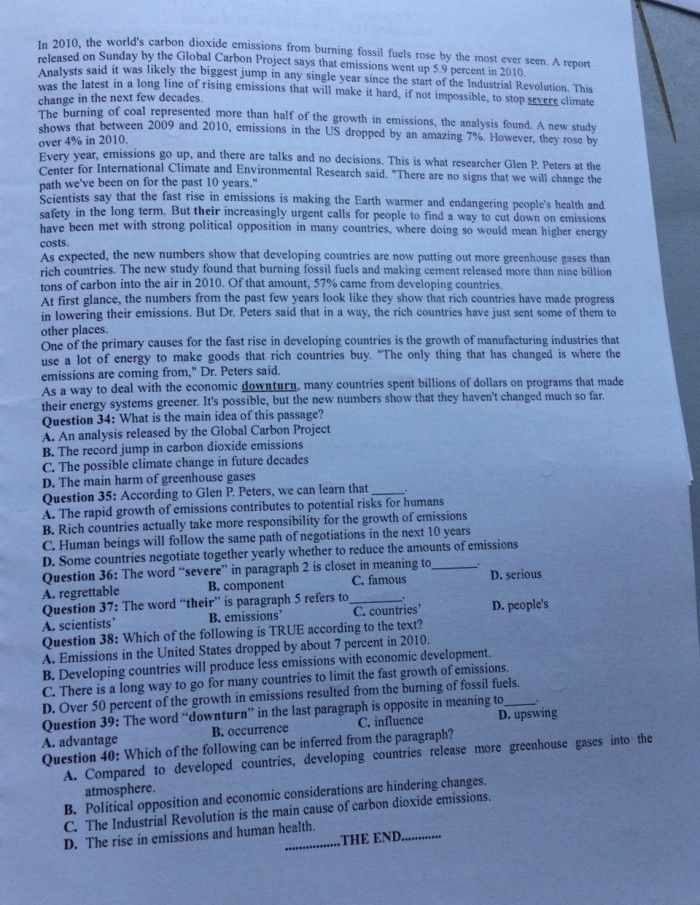Question 34: What is the main idea of this passage?
B. The record jump in carbon dioxide emissions
- The passage mainly discusses the significant rise in carbon dioxide emissions in 2010, including the causes and implications.
Question 35: According to Glen P. Peters, we can learn that
A. The rapid growth of emissions contributes to potential risks for humans
- Glen P. Peters highlights the urgency of addressing the rapid increase in emissions, which poses long-term risks to the Earth’s climate and human safety.
Question 36: The word "severe" in paragraph 2 is closest in meaning to
D. serious
- "Severe" refers to the seriousness or intensity of the potential climate change caused by the rise in emissions.
Question 37: The word "their" in paragraph 5 refers to
A. scientists'
- The word "their" refers to the scientists who have made the urgent calls to reduce emissions.
Question 38: Which of the following is TRUE according to the text?
C. There is a long way to go for many countries to limit the fast growth of emissions.
- The passage discusses how emissions continue to rise and the lack of progress made by many countries in reducing emissions.
Question 39: The word "downturn" in the last paragraph is opposite in meaning to
D. upswing
- "Downturn" refers to a decline, while "upswing" refers to an increase or improvement, making them opposites.
Question 40: Which of the following can be inferred from the paragraph?
B. Political opposition and economic considerations are hindering changes.
- The passage mentions that political opposition and economic concerns, such as the cost of energy, are major obstacles to reducing emissions.
Trang chủ
Giải bài tập Online
Flashcard - Học & Chơi
Dịch thuật
Cộng đồng
Trắc nghiệm tri thức
Khảo sát ý kiến
Hỏi đáp tổng hợp
Đố vui
Đuổi hình bắt chữ
Quà tặng và trang trí
Truyện
Thơ văn danh ngôn
Xem lịch
Ca dao tục ngữ
Xem ảnh
Bản tin hướng nghiệp
Chia sẻ hàng ngày
Bảng xếp hạng
Bảng Huy hiệu
LIVE trực tuyến
Đề thi, kiểm tra, tài liệu học tập








 Trả lời nhanh trong
Trả lời nhanh trong 



 Xem thêm
Xem thêm 
 Thưởng th.10.2024
Thưởng th.10.2024 Bảng xếp hạng
Bảng xếp hạng